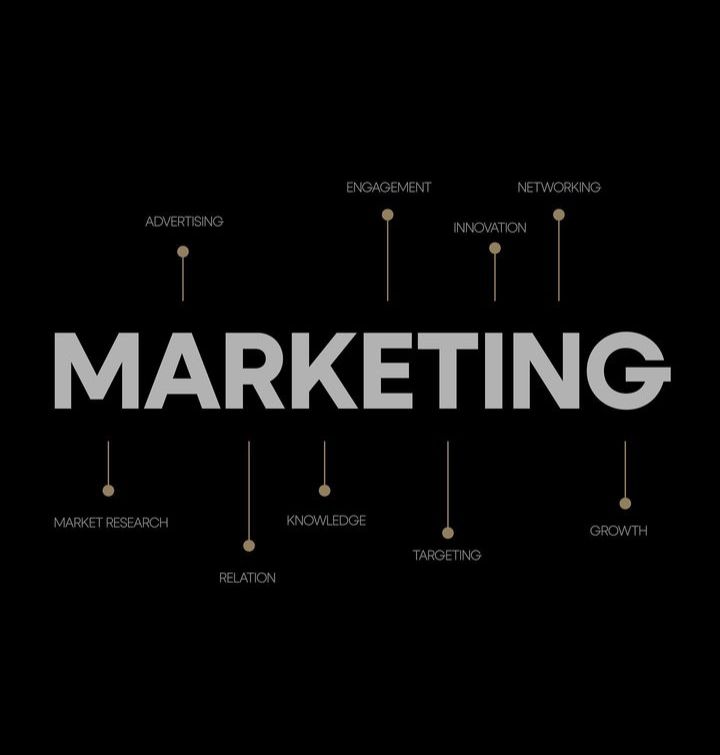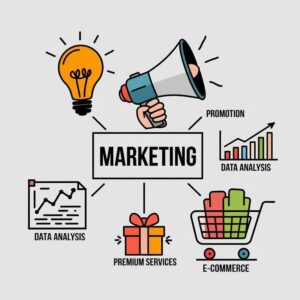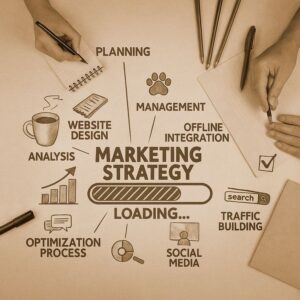
Maryam N
Marketing is the heart of every successful business. No matter how great a product or service is, it needs the right strategy to reach customers and create value. In today’s competitive environment, businesses cannot rely on guesswork. Instead, they need structured, practical, and flexible marketing strategies that match changing customer expectations. This article explores key marketing strategies under different subtopics to help businesses grow effectively.


1. Understanding the Basics of Marketing Strategy
A marketing strategy is more than just advertising or posting on social media. It is a long-term plan that focuses on how a business will reach its target audience, communicate value, and build lasting relationships. A good strategy answers three important questions: Who are the customers? What do they need? How can the business solve their problems better than competitors? Without clarity on these, marketing efforts often fail to deliver results.
2. Market Research and Consumer Insights
Every strong marketing strategy begins with market research. This involves studying customer behavior, needs, and preferences. Research can be done through surveys, interviews, focus groups, or data analysis. For example, a clothing brand may discover through research that younger customers prefer eco-friendly materials. By using this insight, the brand can adjust its products and marketing messages to match customer values. Consumer insights not only guide product development but also help businesses choose the right communication channels.
3. Defining Target Audience and Segmentation
Not all customers are the same. Segmentation helps businesses divide the market into groups based on age, gender, income, location, or lifestyle. A clear target audience ensures marketing messages reach the right people. For instance, a luxury watches brand targets high income professionals, while a budget friendly fast-food chain focuses on students and families. When businesses define their audience precisely, marketing becomes more effective and cost efficient.
4. Building a Strong Brand Identity
A brand is more than a logo or color scheme. It is the emotional connection customers have with a company. A strong brand identity includes consistent messaging, tone of voice, and visual elements. Think about Apple: its brand identity is built on simplicity, innovation, and premium quality. Businesses of all sizes can build brand identity by being authentic, delivering promises, and staying consistent. A trusted brand makes marketing easier because customers already know what to expect.
5. Content Marketing as a Long-Term Tool
In today’s digital world, content is one of the most powerful marketing tools. Content marketing includes blogs, videos, podcasts, infographics, and social media posts. The goal is not only to promote products but also to educate, entertain, or inspire customers. For example, a fitness brand might share workout tips or healthy recipes on its blog. This builds trust and positions the company as an expert in its field. Over time, valuable content attracts loyal customers and increases brand visibility.
6. Social Media Marketing
Social media platforms like Facebook, Instagram, TikTok, and LinkedIn are essential for modern marketing. They allow businesses to engage directly with customers, create conversations, and share updates in real time. Social media marketing involves creating relatable content, running paid ads, and interacting with followers. The key is authenticity. Customers appreciate brands that communicate openly rather than those that only push sales messages. A creative social media strategy can turn ordinary followers into brand advocates.
7. Email Marketing and Customer Retention
While social media is popular, email marketing remains one of the most effective strategies. Emails provide a direct connection to customers without relying on third party platforms. Businesses use email newsletters to share promotions, product launches, and personalized offers. A well-crafted email campaign builds loyalty and keeps customers engaged. Importantly, email marketing focuses on retention, which is often more cost effective than constantly chasing new customers. Loyal customers spend more and recommend businesses to others.
8. Search Engine Optimization (SEO)
Visibility on search engines like Google is crucial for online success. SEO is the practice of optimizing websites, so they appear higher in search results. This involves using relevant keywords, creating quality content, and improving website speed and design. For example, if a bakery wants to attract local customers, it should optimize its website with keywords like “fresh bread near me” or “best cakes in [city name].” A strong SEO strategy increases organic traffic, which often leads to more sales.
9. Paid Advertising and Pay Per Click (PPC)
Sometimes businesses need quick results, and this is where paid advertising comes in. PPC campaigns on platforms like Google Ads or Facebook Ads allow companies to target specific audiences and measure results instantly. For example, an online shoe store can run ads targeting women aged 18–30 who search for “trendy sneakers.” The advantage of paid ads is speed and precision, but they require careful budgeting. If managed well, PPC can bring high returns on investment.
10. Influencer and Partnership Marketing
Influencer marketing has become a powerful way to build trust and expand reach. People trust recommendations from individuals they admire. Collaborating with influencers, bloggers, or industry leaders can expose a brand to a wider audience. For small businesses, partnerships with local influencers or other brands can also be effective. For example, a local coffee shop might collaborate with a bakery to create joint promotions. These partnerships help businesses reach new customers in a cost effective way.
11. Customer Experience and Relationship Building
Marketing is not only about attracting new customers; it is also about keeping them. A positive customer experience builds loyalty. This includes excellent service, personalized offers, and quick problem solving. Businesses that listen to customer feedback and make improvements gain long term trust. For example, online retailers that provide easy returns often win customer loyalty. Relationship based marketing turns customers into repeat buyers and brand promoters.
12. Measuring and Adapting Strategies
No strategy is perfect forever. Markets change, competitors innovate, and customer behavior shifts. That’s why businesses must measure the success of their marketing strategies. Tools like Google Analytics or social media insights help track performance. Key indicators include website traffic, conversion rates, customer engagement, and return on investment. By analyzing results, businesses can adapt their strategies to stay relevant. Flexibility and continuous improvement are the foundations of sustainable marketing success.
Conclusion
Marketing strategies are not about following a single formula. They are about understanding customers, delivering value, and building relationships over time.

From market research and branding to social media and SEO, each strategy plays a role in shaping business growth. A successful company combines these approaches with creativity, authenticity, and adaptability. In the end, marketing is less about selling and more about connecting turning customers into communities and products into experiences. Businesses that embrace this mindset will continue to thrive in an ever-changing marketplace.